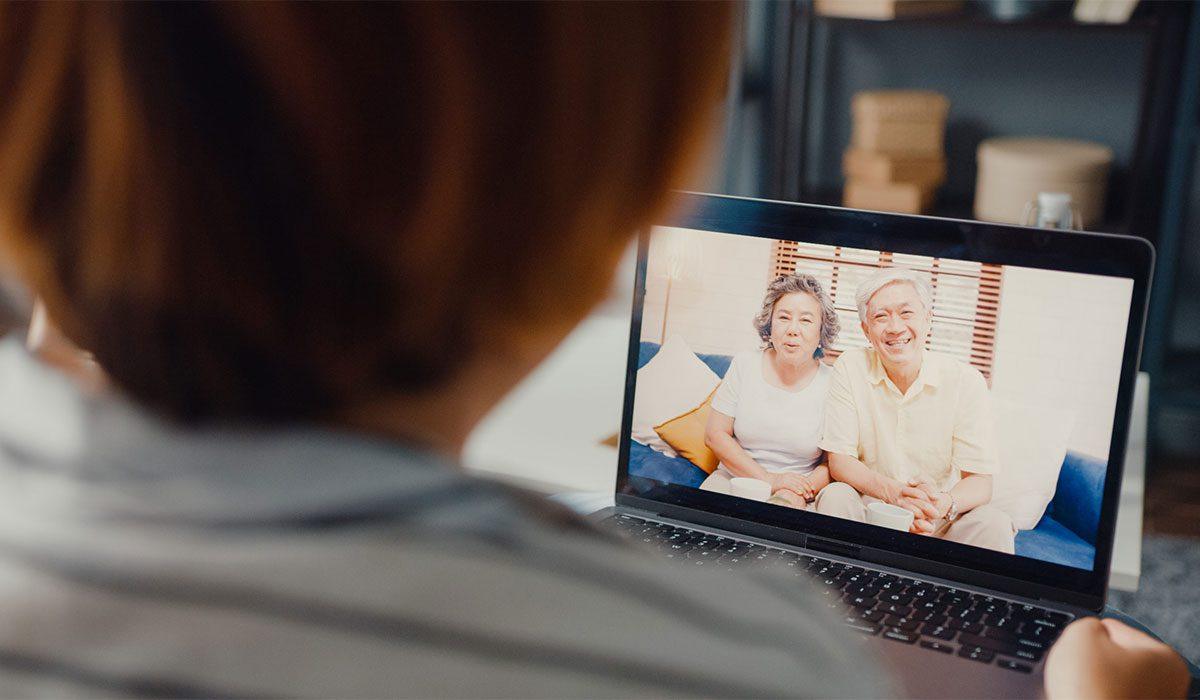Security cameras have become an integral part of modern society, serving as the silent sentinels that safeguard our homes, businesses, and public spaces. Their presence is ubiquitous, providing a sense of security and a tool for crime prevention and resolution. But how did we arrive at this point where cameras are omnipresent in our daily lives? This blog delves into the fascinating history of security cameras, from their inception during World War II to the advanced, AI-driven systems of today. We'll explore the milestones in their development, the impact they've had on society, and what the future holds for surveillance technology.
Before Security Cameras Were Invented
The concept of surveillance is not new. Ancient civilizations employed various methods to monitor and control their populations, such as watchtowers and guards. However, the idea of using technology to observe and record activities remotely didn't materialize until much later. The necessity for such monitoring systems became apparent in the 20th century, driven by military needs and the advancement of technology.
When Was the First Security Camera Invented and Who Invented It?
The first documented use of a security camera system dates back to 1942 during World War II. The German engineer Walter Bruch, working for Siemens AG, developed the closed-circuit television (CCTV) system. This early CCTV was installed to monitor the launch of V-2 rockets. This pioneering use of video surveillance allowed operators to observe rocket launches from a safe distance, ensuring both operational efficiency and safety.
While this system was rudimentary compared to today's standards, it laid the groundwork for future developments in surveillance technology. The ability to transmit live video feeds to a specific location was revolutionary and opened up new possibilities for monitoring and security.
The invention of the first security camera can be credited to the efforts of Siemens AG and Walter Bruch. However, the commercialization and widespread adoption of security cameras took more than just one inventor. In 1949, the American company Vericon introduced the first commercially available CCTV system. Although there isn't much detailed information about Vericon's system and its early adopters, it marked a significant step in making video surveillance accessible beyond military applications.
Throughout the 1950s and 1960s, various innovators and companies contributed to the advancement of security cameras, gradually refining the technology and expanding its use cases. The role of these early pioneers was crucial in transforming wartime innovation into a versatile tool for civilian applications.

History of Surveillance Cameras
Surveillance cameras have undergone significant transformations since their inception. Here's a detailed look at their evolution through the decades:
1960s: Adoption of CCTV in Public Spaces and Large Events
-
Cities like London and New York started using CCTV systems to monitor crowds during large events and in areas prone to crime.
-
These early systems were relatively simple, relying on analog technology and providing grainy black-and-white images.
-
They proved effective in deterring criminal activities and aiding law enforcement.
1970s: Integration into Commercial and Industrial Settings
-
Security cameras began to find their way into banks, retail stores, and manufacturing facilities.
-
The introduction of video cassette recorders (VCRs) allowed for the recording of footage, a game-changer in the security industry.
-
Businesses used CCTV to prevent theft, monitor employee activity, and ensure safety compliance.
1980s: Introduction of VCRs and Recording Capability
-
VCRs made it possible to record and store footage, crucial for security purposes.
-
Improvements in camera technology, including the introduction of color cameras and better resolution, made CCTV systems more effective and user-friendly.
-
Wider adoption across various sectors ensued.
1990s: Digital Advancements and the Rise of Smaller, More Efficient Cameras
-
Digital video recorders (DVRs) replaced VCRs, offering better quality recordings and easier management of footage.
-
Cameras became smaller, more efficient, and capable of producing higher resolution images.
-
The internet's rise laid the groundwork for the next big leap in surveillance technology.
2000s: Emergence of Networked (IP) Cameras and Remote Monitoring
-
Networked, or IP (Internet Protocol), cameras could transmit data over the internet, allowing for remote access and monitoring.
-
This capability transformed the security landscape, making it possible to view live feeds from anywhere in the world.
-
IP cameras offered superior image quality, better scalability, and easier integration with other security systems.
2010s to Present: High-Definition Video, AI-Based Analytics, and Smart Surveillance Features
-
High-definition (HD) and even 4K cameras became standard, offering crystal-clear images and detailed footage.
-
AI integration brought smart surveillance features like facial recognition, motion detection, and behavioral analysis.
-
These technologies enable more proactive and intelligent security solutions, capable of identifying potential threats and responding in real-time.

The Impact of Security Cameras
Security cameras have had a profound impact on various aspects of society. Here are some key areas where they have made a difference:
Enhanced Crime Prevention and Detection
-
Security cameras serve as a powerful deterrent against criminal activities.
-
Surveillance footage provides crucial evidence that helps law enforcement identify and apprehend suspects.
-
This has led to higher crime clearance rates and improved public safety.
Role in Law Enforcement and Public Safety
-
Law enforcement agencies rely heavily on security cameras for surveillance and investigation.
-
Public spaces, such as streets, parks, and transportation hubs, are monitored to ensure safety and respond quickly to incidents.
-
Surveillance systems play a vital role in crowd control and coordination during large events or emergencies.
Influence on Business Security and Operational Efficiency
-
For businesses, security cameras are essential tools for protecting assets, monitoring employee behavior, and ensuring compliance with safety regulations.
-
Retailers use cameras to prevent theft and manage inventory, while manufacturers use them to oversee production processes and maintain quality control.
-
The data collected by security cameras can also be used to optimize operations and improve efficiency.
Privacy Concerns and Ethical Considerations
-
Despite their benefits, security cameras raise significant privacy and ethical concerns.
-
The constant surveillance of public and private spaces can lead to a sense of intrusion and loss of privacy.
-
There is also the risk of misuse or abuse of surveillance data.
-
Striking a balance between security and privacy is a critical challenge that society must address as surveillance technology continues to evolve.
Societal Impact and Changes in Public Behavior Due to Surveillance
-
The pervasive presence of security cameras has changed how people behave in public spaces.
-
Knowing they are being watched, individuals may act more cautiously and law-abidingly.
-
However, constant surveillance can also lead to feelings of unease and mistrust.
-
The societal implications of widespread surveillance are complex and multifaceted, influencing everything from personal interactions to public policies.

Future Trends of Security Cameras
The future of security cameras looks promising and exciting. Here are some of the trends likely to shape the next generation of surveillance systems:
Advances in AI and Machine Learning for Smarter Surveillance
-
AI and machine learning will continue to play a significant role in the evolution of security cameras.
-
These technologies will enable more sophisticated and accurate analysis of video footage, allowing for real-time detection of suspicious activities and automated responses.
-
For instance, AI-powered cameras could identify potential threats based on behavioral patterns and alert security personnel before an incident occurs.
Integration with IoT Devices and Smart Home Systems
-
The integration of security cameras with the Internet of Things (IoT) and smart home systems will enhance their functionality and interoperability.
-
Cameras will be able to communicate with other smart devices, such as door locks, lighting systems, and alarms, creating a comprehensive and cohesive security ecosystem.
-
This interconnectedness will provide users with greater control and convenience in managing their security.
Increased Use of Facial Recognition and Biometric Technologies
-
Facial recognition and biometric technologies are becoming more prevalent in security systems.
-
These features offer enhanced accuracy and reliability in identifying individuals, making them valuable tools for access control and identity verification.
-
As these technologies become more refined, they will play a crucial role in enhancing security and reducing the risk of unauthorized access.
Development of More Discreet and High-Performance Cameras
-
Future security cameras are likely to be smaller, more discreet, and capable of capturing high-quality footage even in challenging conditions.
-
Innovations in camera design and sensor technology will enable better performance in low-light environments, wider fields of view, and higher resolutions.
-
These advancements will make security cameras more effective and versatile in various applications.
Future Challenges, Including Cybersecurity and Data Privacy
-
As security cameras become more advanced and interconnected, the risks associated with cybersecurity and data privacy will also increase.
-
Protecting surveillance systems from hacking and unauthorized access will be a critical challenge.
-
Ensuring that data collected by security cameras is stored and handled securely will be essential to maintaining public trust and compliance with privacy regulations.
Conclusion
The journey of security cameras from their inception during World War II to the sophisticated systems of today is a testament to human ingenuity and the relentless pursuit of security and safety. These devices have become indispensable in our efforts to protect lives and property, deter crime, and maintain public order. However, as we continue to innovate and improve surveillance technology, we must also address the ethical and privacy concerns that come with it. Balancing security with privacy will be crucial as we move forward into an increasingly monitored world.










Leave a comment
This site is protected by hCaptcha and the hCaptcha Privacy Policy and Terms of Service apply.